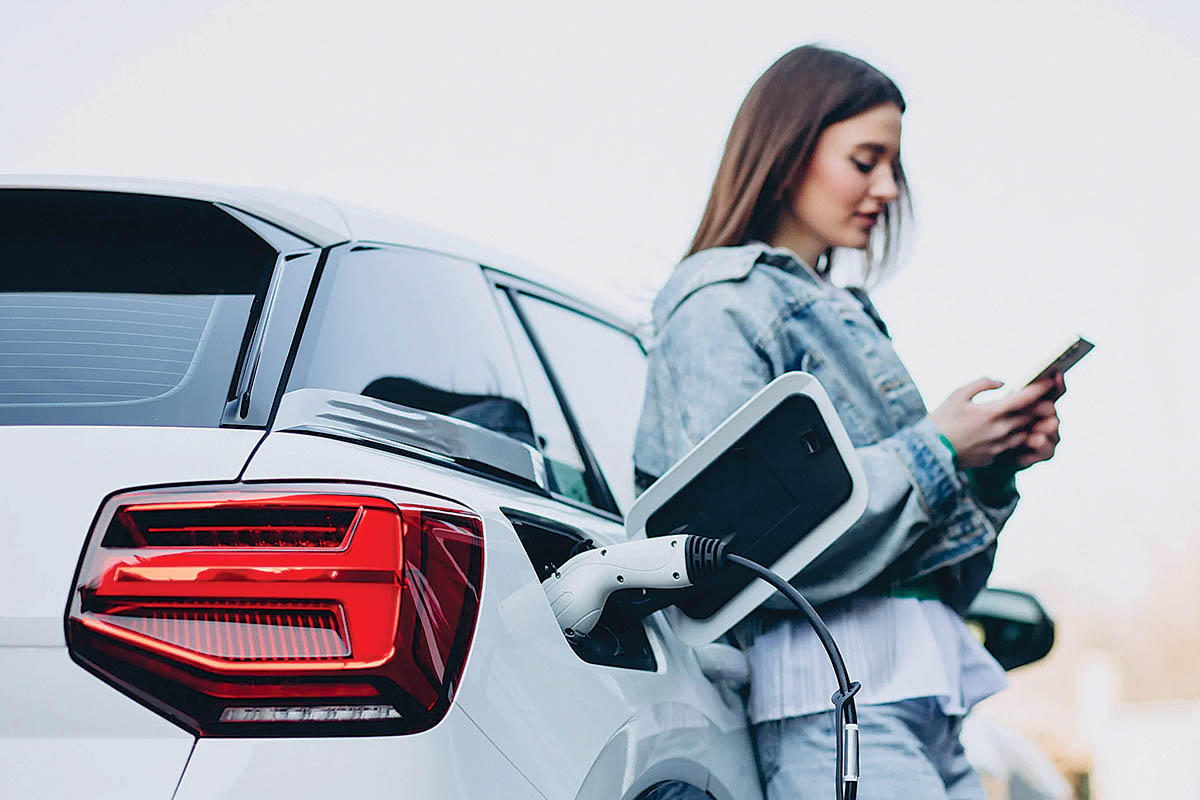
Electric vehicles (EVs) are undergoing a revolutionary transformation, propelled by significant innovations in battery technology. At the forefront of this evolution is the development of solid-state batteries, which are set to replace the traditional lithium-ion variants. These advanced batteries offer significantly higher energy densities which means EVs can travel longer distances on a single charge. Moreover, they promise reduced charging times and improved safety, eliminating risks such as overheating or fire hazards associated with conventional batteries.
Automakers and tech companies alike are investing billions in R&D to commercialise this technology. For instance, the collaboration between Stellantis and Factorial has resulted in a solid-state battery prototype that charges from 15% to 90% in just 18 minutes at room temperature, an achievement that could dramatically reshape consumer expectations regarding EV performance and convenience.
Parallel to solid-state advancements, the emergence of sodium-ion batteries is garnering global attention. These batteries do not rely on scarce and expensive materials like lithium and cobalt, making them a more sustainable and affordable alternative. Sodium, being more abundant, reduces supply chain risks and costs. Although sodium-ion batteries currently offer lower energy densities compared to lithium-ion variants, their advantages in terms of safety, cost and scalability make them particularly attractive for applications in low-cost EVs and grid storage solutions.
Chinese battery manufacturers, including CATL, have already started mass-producing sodium-ion batteries and integrating them into commercial electric vehicles, indicating the technology’s potential for broader market disruption in the years ahead.
Autonomous driving is another frontier shaping the EV landscape. Significant progress is being made toward higher levels of autonomy, driven by advances in sensors, artificial intelligence and machine learning. Regulatory frameworks are beginning to keep pace with technological capabilities. For example, the United Nations Economic Commission for Europe (UNECE) has adopted Regulation 157 which standardises Automated Lane Keeping Systems (ALKS) and permits automated lane changes at speeds of up to 130 kilometres per hour. These regulatory shifts indicate a move toward global harmonisation and lay the groundwork for more sophisticated levels of vehicle autonomy in the near future.
Automakers are increasingly integrating semi-autonomous features into their latest models, gradually familiarising drivers with the technology while preparing the infrastructure and regulatory ecosystem for full autonomy.
Government policies and global regulatory roadmaps are playing a pivotal role in accelerating the adoption of EVs.
Many countries have introduced a mix of incentives to promote EV uptake, including purchase subsidies, tax rebates and reduced registration fees. Additionally, governments are investing in public charging infrastructure and offering grants for private installation. Norway is a leading example, aiming for all new vehicle sales to be electric by 2025.
The European Union, the United States, India and China have also set ambitious targets ranging from 2030 to 2050 for achieving zero-emission mobility. These policy actions not only promote consumer adoption but also drive innovation within the industry by providing a predictable environment for long-term investments.
China has emerged as the undisputed global leader in the EV market. In 2024, over 75% of global EV sales originated from China, thanks to a combination of robust government support, vertical integration in battery manufacturing, and competitive pricing. Companies like BYD, Geely and NIO are not only dominating the domestic market but also aggressively expanding into Europe, Latin America and Southeast Asia.
China’s dominance is underpinned by its early investments in battery supply chains, as well as a strategic focus on developing next-generation technologies such as battery swapping, solar-integrated EVs, and AI-driven vehicle ecosystems. This rapid expansion is challenging traditional automakers and forcing them to adapt their strategies in response.
Despite technological advancements, the lack of a widespread and efficient charging infrastructure remains a key bottleneck for mass EV adoption. Urban areas in many developed countries have seen substantial growth in charging stations but rural and remote regions still face significant gaps.
Ultra-fast charging stations, capable of delivering 300+ miles of range in just a few minutes, are still rare outside of specific pilot programmes or metropolitan zones. Grid capacity and standardisation of charging interfaces also present challenges. Governments and private players need to collaborate to scale infrastructure, ensure interoperability, and invest in renewable-powered charging networks to make EVs a viable option for everyone, regardless of location.
The environmental and economic benefits of EVs are among their strongest selling points. From an environmental standpoint, EVs produce no tailpipe emissions, reducing urban air pollution and mitigating climate change impacts. As countries shift toward renewable electricity generation, the carbon footprint of operating EVs continues to decrease.
Economically, EVs are more cost-effective over their lifespan due to fewer moving parts, reduced maintenance needs, and the lower price of electricity compared to gasoline or diesel. Consumers are beginning to realise these advantages, especially as battery prices continue to fall and second-hand EV markets become more robust.
Consumer adoption of EVs has seen a steady rise, driven largely by increasing awareness of environmental issues and growing confidence in EV technology. However, challenges remain. High upfront costs continue to be a barrier, although the total cost of ownership over time often favours EVs.
EVS VS ICE VEHICLES: PROS AND CONS
|
Aspect |
Electric Vehicles (EVs) |
Internal Combustion Engine (ICE) Vehicles |
|
Environmental Impact |
Zero tailpipe emissions, reduces air pollution |
Emits CO2 and pollutants, contributes to climate change |
|
Energy Efficiency |
Converts ~85-90% of electrical energy to motion |
Converts only ~20-30% of fuel energy to motion |
|
Running Costs |
Lower cost per km (electricity cheaper than fuel), fewer maintenance needs |
Higher fuel costs, frequent maintenance (oil changes, filters, etc.) |
|
Performance |
Instant torque, smooth and quiet driving experience |
Good power in large engines, but noisier and less smooth |
|
Refuelling/Recharging |
Longer charging times, charging infrastructure still growing |
Fast refuelling with a widespread network |
|
Range |
Improving but still lower range on some models |
Longer range per full tank |
|
Initial Purchase Cost |
Generally higher upfront cost, though narrowing |
Lower initial cost, wide price range |
|
Technology Features |
Often equipped with advanced software, connectivity, and automation features |
Traditional tech; slowly integrating smart features |
|
Long-Term Resale Value |
Dependent on battery health, improving with tech advances |
Established markets and resale infrastructure |
|
Fuelling Source |
Electricity (can be |
Fossil fuels (finite and polluting) |
Another issue is range anxiety, which stems from the limited driving range of some EV models and insufficient charging infrastructure. Automakers are addressing these concerns by launching more affordable models and equipping them with longer-range batteries. Education campaigns and public demonstration programmes are also helping to shift perceptions and encourage adoption.
When comparing EVs to internal combustion engine (ICE) vehicles, several distinctions emerge. EVs boast higher energy efficiency, converting approximately 85–90% of electrical energy into movement, compared to just 20–30% for ICE vehicles. EVs are also quieter, offer instant torque for smooth acceleration, and require less frequent servicing. On the other hand, ICE vehicles currently enjoy the advantage of faster refuelling and a well-established infrastructure network. They also typically have longer range, although this gap is narrowing. Nevertheless, the long-term trend clearly favours EVs, particularly as new technologies emerge and infrastructure improves.
Looking ahead, the future of electric vehicles appears exceedingly bright. With continued progress in battery innovation, the rise of autonomous driving, supportive policy environments, and increasing consumer demand, EVs are well-positioned to become the mainstream choice for both personal and commercial transportation. The integration of renewable energy sources into EV charging infrastructure will enhance their sustainability even further. As manufacturers continue to address the remaining challenges – cost, range and infrastructure – electric vehicles are expected to transition from a niche alternative to the default mode of transportation globally, marking a significant milestone in the pursuit of sustainable mobility.



-1763358784.png)

-1758273007.jpg)
